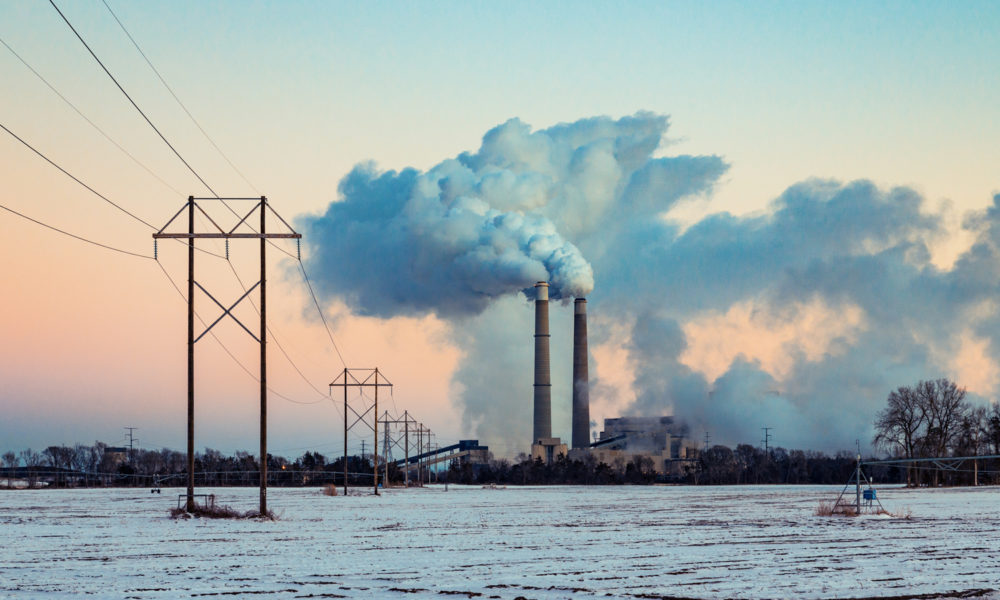Imagine you live next to a coal-fired power plant. Near the power plant, you may have seen heavy machinery dumping loads of greyish substance into an open pit or a pond. You learn that the greyish stuff is called coal ash, a substance that’s chockful of toxic heavy metals such as arsenic, lead, and selenium – all of which are cancer-causing agents – and that 140 million tons of coal ash is produced in the US every year. You may notice that serious health issues are arising in your community, so you can’t help but wonder: is there a connection between your community’s health problems and the dumping of this coal ash? Is this stuff getting into your drinking water?
And then you hear that the Trump administration is planning on rolling back a rule requiring that coal utilities prevent the nasty waste products from entering groundwater, the same water that you drink. The last thing you want is to have this gunk in your drinking water, which you fear will occur or worsen under the rule’s rollback.
If you are affected by this situation, chances are that you are in a low-income bracket, are a person of color, or are from an Indigenous group, and you know far too many examples of the government failing to address or even listen to your concerns, even when legally obligated to. Is there a way to tell government officials your story such that they will sincerely consider it when they deliberate on the policy?
“Virtual hearings” have a lot of problematic features
Here’s the thing, we have a process in place that is designed to collect evidence and testimonials from the public, including from members of impacted communities, when a federal agency is proposing a new rule or modifying an existing rule. But this process, called public hearings, was recently upended by the Environmental Protection Agency (EPA) for two different proposed rollbacks related to the pollution generated by coal-fired power plants.
Called “virtual hearings,” the EPA required participants who wanted to comment to use the internet to join an audio-only webinar. In a move that former EPA officials say has never occurred before during prior administrations, these “virtual hearings” were the only public hearing that took place; no in-person public hearing was held. Instead, the agency completely eschewed face-to-face contact with the public and required that participants speak into the black void of a phone or a computer’s microphone system to provide their comment.
Even the EPA’s justification for providing virtual-only hearings to E&E News – that the EPA’s Office of Water’s 2019 guidance encourages the use of online technology to facilitate public meetings and hearing – seems to back up how out-of-the-norm these virtual hearings are. The guidance warns that a fully online public hearing is the most “substantive” change the agency can make, and suggests that the EPA should first conduct an in-person hearing with a survey to determine if the public would even be receptive to a later online public hearing (there’s no evidence that a survey was or will be conducted by the EPA in this case). Additionally, there may be a double standard here, as the EPA met in-person with coal utilities on the coal ash rule and gave the industry folks advice on where they would like to see more public input.
The internet-only public hearings occurred for two proposed rules, one that delays the deadline for companies to close coal ash ponds and another that rolls back the 2015 coal ash rule designed to curb heavy metals and other pollutants released from coal-fired power plants into nearby waterways. Coal ash has had an enormous impact on frontline communities – communities that live near numerous pollution sources like coal-fired power plants – as a result of the coal ash leaching into nearby drinking water sources. Earthjustice released an analysis showing that 91 percent of coal-fired power plants are contaminating the groundwater with coal ash in an amount that exceeds federal safety standards.
What we lose when there are no in-person hearings
While a virtual hearing may be useful for individuals who cannot attend a public hearing, they cannot serve as a substitute for an in-person hearing. Eighty-seven public interest groups, including NRDC, Earthjustice, Sierra Club, and NAACP, wrote a letter to the EPA specifically requesting an in-person meeting for both of the coal ash actions. The 87 groups explained that an in-person hearing provides the public with the opportunity to bring visual aids, such as maps, photos, and contaminated water and soil, to enhance their points, and speakers can bring their family members and members of impacted communities to serve as form of support. Additionally, they point out that agency officials benefit from conducting in-person hearings, as there is an immeasurable and irreplaceable value in seeing speakers and hearing their testimonies directly, which may be filled with emotion and urgency that cannot be conveyed in a phone call. Betsy Southerland, a former staffer in EPA’s Office of Water who helped write the 2015 coal ash rule, also stated how beneficial in-person testimonies are to agency officials, “You can see the reaction to the audience when you are doing your presentations. Otherwise, in virtual hearings, you and the public can feel like you’re just talking into the void.”
Virtual hearings appear to limit access for certain individuals, particularly the elderly and members of disenfranchised communities. According to one 92-year-old participant of a virtual hearing, it was a challenge to participate since they were less comfortable with using a computer. Additionally, many members of marginalized communities have difficulty in gaining access to the internet and often use their libraries for internet access, a location which is not known for being conducive for speaking out loud to provide personal testimony to government officials.
Underserved communities deserve better than this
Aside from written public comments submitted via the internet or mail, public hearings are the only opportunity that the public has to weigh in on proposed federal rules and have a say in the decisions that our federal agencies are making. Therefore, it is vitally important that the EPA conduct public hearings in a way that does not alienate people who wish to engage in this important process of civic virtue, particularly people from marginalized communities. And considering that the Trump administration’s EPA has been previously accused of disenfranchising impacted communities by not holding public hearings in their state or local areas, it is all the more important that the EPA not use technology in a way that adds additional barriers to ability of the public to provide comments to agency officials in an effective manner.
There are ways that technology can democratize how we interact with government officials – such as by having web-streaming services of an in-person hearing – and there are ways that technology can perpetuate injustices. Virtual-only hearings should never be the policy of the EPA in how they solicit comments since doing so further adds to the already immense body of evidence showing that the Trump administration is willing to dismantle the ability of marginalized communities to play a role in the policymaking process when they advocate for environmental and health policies that are overwhelming supported by scientific evidence. And that is a chilling thought.

